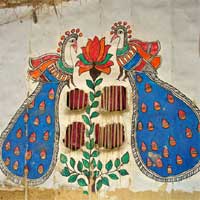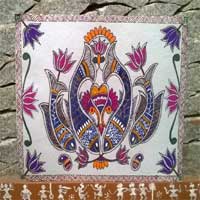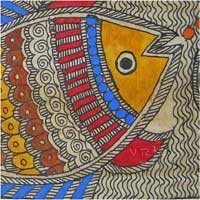Paintings from Madhubani
But even though women in the villages around Madhubani have been practicing their folk art for centuries, the world at large has come to know about these women and to consider them to be "artists" only in the last thirty years. Even now, most of their work remains anonymous.
The women, some of them illiterate, are in any case reluctant to consider themselves individual producers of "works of art" and only a few of them mark the paintings with their own name. Thework is done on freshly plastered or a mud wall. For commercial purposes, the work is now being done on paper, cloth etc. The paintings are basically of religious nature.
They are done in the special rooms in their homes (in the pooja room, ritual area, bridal room.), on the main village walls,etc., for ceremonial or ritualistic purpose. The women offer sincere prayers to the deity before starting the work. Figures from nature & mythology are adapted to suit their style.
The themes & designs widely painted are the worship of Hindu deities such as Krishna, Rama, Siva, Durga, Lakshmi, Saraswati, Sun and Moon, Tulasi plant, court scenes, wedding scenes, social happenings around them, etc. Floral, animal and bird motifs, geometrical designs are used to fill up all the gaps. There is hardly any empty space in this style. The skill is handed down the generations, and hence the traditional designs and patterns are widely maintained.
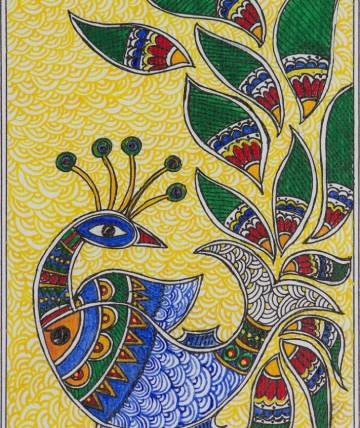
Peacock Madhubani painting
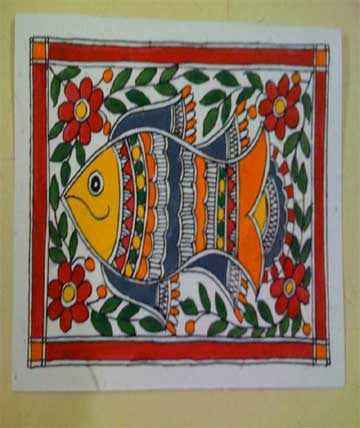
Fish Madhubani paintings.
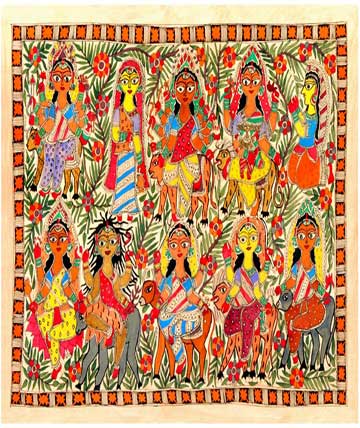
Goddess Madhubani painting
